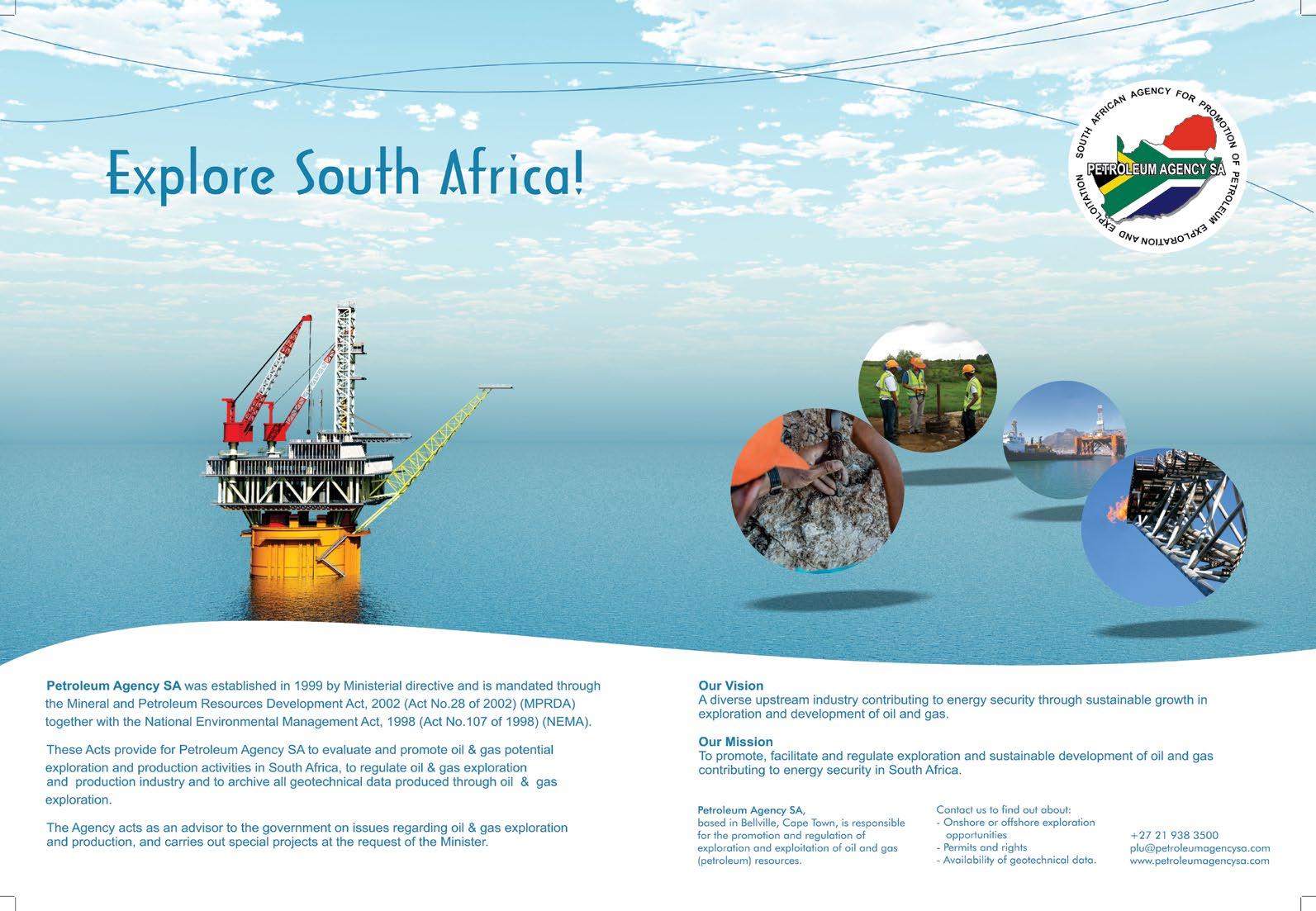
8 minute read
CUSTOMER SATISFACTION
South Africa’s
fuel stations shine a light on customer satisfaction
South Africa’s top five fuel station brands – BP, Caltex, Engen, Sasol and Shell – are leading the way in the customer satisfaction stakes, with one of the highest industry customer satisfaction scores across 10 sectors polled in the South African Customer Satisfaction Index (SA-csi), conducted by Consulta.
This is the first time that fuel stations have been included in the SA-csi, the first independent, comprehensive national customer satisfaction index with international comparability in South Africa which has collected data from more than 400 000 consumers since its inception in 2012.
“The overall customer satisfaction score for the industry is high at 80, however, there is no outright leader in the customer satisfaction stakes, which leaves the field open for a brand to take the lead in providing a differentiated customer experience,” says Ineke Prinsloo, Head of Customer Insights at Consulta
“Fuel, as a product, is a commodity and aspects such as quality of fuel is essentially a hygiene factor, and not a differentiator. Most consumers have no understanding of fuel quality at brand A versus brand B and expect that they will get a product of appropriate standard at every fuel station. However, what is not a commodity is the customer experience and the choice that consumers have – here the stakes are high to attract the patronage of customers who are prepared to go out of their way to use a specific brand because of the experience and perceived value they get at a particular fuel station,” she explains.
The 2019 SA-csi for fuel stations provides highly scientific insights into the overall level of satisfaction of customers of South Africa’s top five fuel station brands. The 2019 SA-csi polled 1 600 fuel station customers during the last quarter of 2019.
Key take-outs of the 2019 SA-csi for fuel stations 1. Customer satisfaction – overall index
• All fuel station brands perform on par (79.6) in terms of overall customer satisfaction scores, with the exception of Caltex which is below par. While all brands perform at a high level in terms of customer satisfaction, there are no outright leaders. This suggests that while fuel station brands deliver a high-quality experience for customers, it is largely an undifferentiated experience. An ‘on par’ score refers to the fact that there is no statistical difference compared with the rest of the industry. Engen (80.8) and Shell (80.3) lead by small margins, followed closely by BP (79.2) and Sasol (79.2) – all on par – followed by Caltex (77.2) below par. In terms of global comparisons, South Africa’s fuel station brands outpace the US-csi score of 74 by a significant margin. However, the service dynamics are quite different. In the US, a fuel purchase is typically a DIY process where you fill up your vehicle yourself, whereas in SA customers would be assisted by forecourt employees. It is easy to see why employee attitude and service ethic can play a make or break role for fuel stations and customer satisfaction in SA.
2. Customer expectations and perceived quality
• BP, Engen, Sasol and Shell all perform on par in terms of customer expectations and perceived quality, while Caltex comes in just below par. • All fuel station brands however have a positive expectation-quality gap, which means that they all exceed customer expectations. Engen is best at exceeding customer expectations. • When customers were asked what the most important aspects were that fuel stations needed to improve on, the top five mentions were service experience, staff attitude, rewards and value for money, skills and knowledge of staff and cleanliness.
3. Perceived value
• Perceived value is a measure of the quality, relative to the price paid. The perception of value for money is a strong predictor of future usage and company growth.
All fuel station brands perform on par (74.6) in terms of perceived value. However, given that fuel is a highly inelastic product which means demand does not change significantly with any change in price, typically because it is deemed an essential product, service and reward addons and overall customer experience in the forecourt play a big role in the perceived value that customers enjoy. The product - fuel - in and of itself has few differentiating qualities – which is why the customer’s experience in the forecourt and with frontline employees plays a crucial role in overall customer experience. Value for money will also play a much bigger role as the economy bites, and here fuel stations that have tied up with loyalty/reward programme partners will likely have an advantage such as BP with Pick ‘n Pay’s Smart Shopper, Discovery fuel rewards with BP and Shell, and FNB eBucks at Engen.
4. Perceived value
• All fuel stations are on par (74.6) with perceived value. • Perceived value is a measure of quality relative to the price paid.
5. Complaints incidence and resolution
• In terms of complaints incidence and handling the industry average of complaints incidence is 8.7/100 and complaint handling is 45.0/100, which puts the industry on par with international standards in terms of how well issues are addressed. Sasol has the lowest complaint incidence (6.4) of all fuel station brands, and an equally impressive complaint resolution score (55.9) – both scores are significantly better than the industry par. This means that Sasol has a low incidence of customer complaints and is also best at resolving them. It is important to note that of the complaint types, 80% of complaints relate to the ‘human’ aspects such as staff skills and knowledge, attitude of staff, responsiveness, and service. This emphasises the importance of customer service training and developing a customercentric mindset and processes among employees who are the ultimate delivery mechanism of customer satisfaction.
6. Customer loyalty
• Across the board, customer loyalty scores are high, and outpace the industry par scores of most other industry sectors polled. Fuel stations have a high customer loyalty par of 81.3% which suggests that customers are loyal to their chosen fuel station brand. • Engen has the most loyal customers at 84.5% which is also significantly higher than the industry par. • BP follows at 80.7%, Shell at 80.4% and then
Sasol (78.8%) and Caltex (77.6%) coming in below par. • All brands enjoy a remarkably high percentage of brand loyalists. However, there is some complication in determining whether this is driven by the rewards programme that the customer subscribes to.
7. Net promoter score
• Net promoter score measures the likelihood of a person recommending a brand. The industry
par score is 48.4% Engen has the highest NPS score at 59.5% which is well above industry par, and also has the highest number of customers who are actively recommending the brand at 70%, well above the industry par of 62%. BP (43.8%) and Sasol (39%) follow below par on NPS score, while Caltex (34.9%) comes in with the lowest NPS score. Caltex and Sasol have the lowest scores in terms of promoters, both at 53% and also the highest percentage of detractors at 28% and 33% respectively.
“While fuel in of itself is a commodity product, customers still have a wide choice of brands to choose from. Fuel station brands spend tremendously on advertising and marketing activity to attract consumers to their fuel stations versus their competitors. Factors such as advertising, marketing, customer experience and corporate social responsibility play a big role here, as well as how consumers perceive them in terms of the cleanliness, safety and convenience of their facilities, the friendliness and service ethic of their staff, other value added services at their forecourts such as food convenience stores and so on,” says Prinsloo.
“Another big driver that fuel companies have tapped into is that of loyalty programmes and rewards – most brands have tied up with partners such as Discovery Miles, Pick ‘n Pay Smart Shopper and eBucks as one way to differentiate and attract consumers to their service stations by offering customers points/rewards on their chosen loyalty programmes,” says adds.
Prinsloo says that while convenience also plays a big role in terms of customer choices, it is not a substitute for a bad experience in the forecourt with staff and other aspects such as cleanliness and safety.
“In this regard, the people factor is fundamental to the patronage that a fuel station enjoys. Maintaining high service standards and a customercentric philosophy is key for fuel station owners. However, since fuel stations typically operate on a franchise model, it can be challenging to establish maintain consistency across different fuel stations even within the same brand or group,” she adds.
A sharp focus on customer satisfaction and continuous improvement throughout all areas of the customer journey is critical for success. The training and onboarding of employees is also crucial factors, as are the operational systems and processes that make for a quick, pleasant, and efficient customer experience. Finally, there are also macro trends at play that will radically reshape the forecourt of the future - environmental concerns, price pressures, electric vehicles and the retailing/merchandising aspects of the forecourt are all important aspects that will shape customer experience in future.
As a strategic tool for gauging the competitiveness of individual firms and predicting future profitability, an organisation’s customer satisfaction performance, as measured by the SA-csi methodology, provides a predictive indication of how well the firm will perform in terms of future revenue and earnings growth. Supported by both the scientific and practitioner community, the SA-csi is the first independent, comprehensive national customer satisfaction index with international comparability in South Africa and has collected data from more than 400 000 consumers since its inception in 2012. The SA-csi forms part of a global network of research groups, quality associations and universities that have adopted the methodology of the American Customer Satisfaction Index (ACSI) via its Global CSISM programme.












